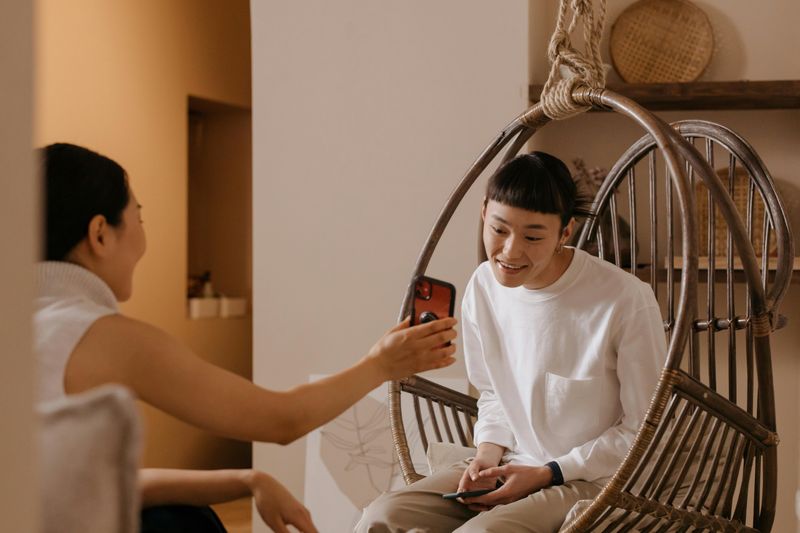10 Everyday Conversation Mistakes You’re Probably Making Without Realizing It

We all think we’re good at talking to others, but the truth is many of us have picked up habits that secretly damage our conversations. These small missteps can leave others feeling unheard, frustrated, or even hurt. The good news? Once you recognize these conversation killers, they’re surprisingly easy to fix. Becoming aware of these common mistakes can transform how you connect with everyone from your partner to your coworkers.
1. Boomerasking

Ever asked someone a question only to immediately answer it yourself? That’s boomerasking, and it sends a clear message that you’re not actually interested in the other person’s thoughts. It feels like you’re just using questions as a launching pad for your own opinions.
Many people fall into this habit during first dates or networking events when nervousness takes over. Instead, try asking a genuine question, then pause and listen. Count to three in your head if needed.
When you catch yourself about to boomerang, take a breath. Remind yourself that conversations are exchanges, not performances. Your patience will be rewarded with deeper connections and surprising insights you might have missed.
2. Conversation Hijacking

Jumping in before someone finishes speaking is like slamming a door in their face. This habit signals impatience and suggests their thoughts aren’t worth waiting for. Most interrupters don’t even realize they’re doing it – they’re just excited to share their ideas.
The damage happens silently. People who are repeatedly interrupted eventually stop trying to contribute. They leave conversations feeling invisible and unvalued.
Practice listening all the way to the end of someone’s thought, even when you think you know where they’re heading. Count a full second after they finish before responding. This tiny pause creates space for thoughtful exchange and shows genuine respect that others will notice and appreciate.
3. Making Every Story About You

When someone shares a story about their camping trip and you immediately launch into your three camping adventures without acknowledging theirs, you’ve become a spotlight hogger. This habit transforms dialogue into parallel monologues where nobody feels truly heard.
We often do this unconsciously, thinking we’re building connection through similar experiences. Unfortunately, it creates the opposite effect – the other person feels their experience was merely a prompt for your performance.
Next time someone shares something, resist the urge to match it with your story. Instead, ask a follow-up question about their experience. When you do share related stories, keep them brief and circle back to their original point. This balanced approach creates genuine two-way connection.
4. Solution Spraying

Solution spraying happens when we rush to fix others’ problems instead of simply listening. While it often comes from a helpful place, this habit can leave people feeling misunderstood and dismissed.
Most of the time, when someone shares their struggles, they aren’t seeking immediate solutions—they’re looking for validation and connection. Jumping straight into advice skips the crucial step of acknowledging their feelings.
Instead, try responding with empathy: “That sounds really tough” or “How are you feeling about that?” If you’re unsure what they need, ask: “Would you like suggestions or just someone to listen?” This approach honors their emotional needs while still offering genuine support.
5. Asking Questions That Kill Conversation

Closed-ended questions often lead to awkward silences and stalled conversations. When you ask something that only invites a one-word answer, like “yes” or “no,” you unintentionally create conversational quicksand where both people struggle to keep things moving.
These types of questions may feel safe, but they actually create more work. Every short response forces you to come up with a brand-new question, which can quickly exhaust both sides of the exchange.
A better approach is to reframe them as open-ended questions. Instead of “Did you like the movie?” try “What stood out to you about that movie?” Swap “Was work busy today?” with “What was the most interesting part of your day?” Open questions spark stories and opinions, creating natural flow and deeper connection.
6. Conversation Skimming

Your friend mentions they’re taking piano lessons, and you respond with “Cool!” before changing the subject. You’ve just missed a golden opportunity for connection through follow-up questions. This surface-level engagement makes conversations feel shallow and forgettable.
Great conversationalists show curiosity about details. They ask what sparked the interest, how it’s going, or what challenges they’re facing. These questions show you’re truly engaged with the person, not just passing time.
Challenge yourself to ask at least one follow-up question before changing topics. This simple habit transforms small talk into meaningful exchange. The best part? People remember how you made them feel heard long after they’ve forgotten what you said about yourself.
7. Asking Too Many Questions

Rapid-fire questioning can make even casual conversations feel like job interviews. While questions show interest, too many without sharing anything about yourself creates an uncomfortable power imbalance. The other person feels examined rather than engaged with.
This habit often stems from social anxiety or a genuine desire to keep conversation flowing. Ironically, it creates the opposite effect – making interaction feel mechanical and one-sided.
Balance questions with occasional statements about yourself. After asking something, share a related thought or experience before asking another question. This rhythm of ask-share-ask creates natural conversation flow where both people feel equally involved and understood. Remember that authentic connection requires mutual disclosure, not just curiosity.
8. Shrinking Others’ Feelings

Dismissive phrases may sound harmless, but they can invalidate someone’s experience and shut down emotional sharing. When a person trusts you with their feelings, minimizing language sends the message that those emotions are wrong or unimportant.
Often, we use these phrases with good intentions—hoping to offer comfort or perspective. In reality, they usually prioritize our own discomfort over the other person’s emotional experience.
A better approach is to replace minimizing words with validating ones. Try saying, “That sounds really frustrating” or “I can see why you’d feel that way.” Acknowledging emotions doesn’t mean you agree with everything; it simply shows respect before moving toward problem-solving or different viewpoints.
9. Being Distracted

Half-listening while checking your phone sends a crystal-clear message: whatever’s on your screen matters more than the person in front of you. This divided attention is so common we barely notice it anymore, but its impact on relationships runs deep.
Our brains can’t truly multitask – they switch rapidly between tasks, meaning neither gets full attention. When someone’s sharing something important, this fractured focus feels disrespectful, regardless of your intentions.
Make a habit of putting devices face-down or in another room during conversations that matter. If you must check your phone, excuse yourself briefly rather than pretending to listen. This small gesture of full presence is increasingly rare and therefore increasingly valuable in building trust and connection.
10. Conversation Peacocking

One-upping can quickly turn a conversation into a competition nobody wins. This habit of topping someone else’s story with a more impressive version often makes people hesitant to share openly.
Most people who one-up aren’t trying to brag—they’re often eager to connect through similar experiences. Unfortunately, the way it comes across can make others feel their stories weren’t good enough or worth acknowledging.
The key is to validate before sharing. Start with something like, “That sounds amazing!” and, if relevant, add, “I had a similar experience once.” Better yet, let their story stand on its own. Genuine connection thrives on mutual appreciation, not competitive storytelling.

Comments
Loading…